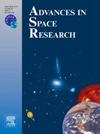Provision of land use and forest density maps in semi-arid areas of Iran using Sentinel-2 satellite images and vegetation indices
IF 2.8
3区 地球科学
Q2 ASTRONOMY & ASTROPHYSICS
引用次数: 0
Abstract
Zagros forests of Iran have several environmental, ecological, and socioeconomic values which provide the unique habitats for many endemic species. However, these ecosystems have severely been destroyed by many anthropogenic and natural factors in recent years. Knowledge of area, distribution, and density of these forests and current natural and human-made land uses inside these ecosystems is necessary for protective management of Zagros forests. This research was performed to obtain the land use and forest density maps in Zagros vegetative area of Fars province in southwestern Iran using Sentinel-2A, vegetation indices, Google Earth, and field data. First, the boundary of Zagros forests in Fars province was digitized on Google Earth images. Then, Sentinel-2A satellite images covering the forest region in Fars province were obtained from Copernicus website. A pilot area (16000 ha) in the province was considered to investigate the precision of different classification methods. Then, Sentinel-2A satellite image of pilot region was classified by some supervised classification methods (ML: maximum likelihood, MD: minimum distance, MaD: mahalanobis distance, SAM: spectral angle mapper, NN: neural network, SVM: support vector machine, and RF: random forest). In addition, the efficiency of different vegetation indices (NDVI, TNDVI, SAVI, and RVI) was evaluated for classifying the forest density in the pilot region. Furthermore, pilot area was considered to test the precision of Google Earth satellite images in this study. For this purpose, 270 field samples were taken as square plots in nine land uses. Selection of the plots inside each land use was randomly. After initial analysis, all satellite images covering the forest area in Fars province were classified by the most accurate algorithm (SVM) to obtain the land use map. On the other hand, the most accurate vegetation index (SAVI) was used to classify the forest density in the study area. Validation of final maps was performed using several random plots on Google Earth images. The initial results of this research indicated that Google Earth images have an overall accuracy (OA) of 96 % compared to ground truth in Zagros vegetative area of Fars province. Results of land use map showed that Zagros forest has covered an area of 794651.79 ha in Fars province. The findings of this research demonstrated that SVM algorithm (OA: 92.94 %, and k: 0.85) has efficiently classified the land uses in Fars province. In addition, SAVI (r2 = 0.719, p < 0.001) has highly been correlated to the forest density in Zagros vegetative area of Fars province. Therefore, land use mapping using SVM algorithm and Sentinel-2A images, and forest density mapping using SAVI is highly recommended in Zagros forests of Fars province in time series which are essential for protective management of these forests in spatio-temporal scale.
利用Sentinel-2卫星图像和植被指数提供伊朗半干旱地区的土地利用和森林密度图
伊朗的扎格罗斯森林具有多种环境、生态和社会经济价值,为许多特有物种提供了独特的栖息地。然而,近年来,这些生态系统受到人为和自然因素的严重破坏。了解这些森林的面积、分布和密度以及这些生态系统内目前的自然和人为土地利用情况,对于扎格罗斯森林的保护性管理是必要的。利用Sentinel-2A、植被指数、谷歌Earth和野外数据,对伊朗西南部法尔斯省扎格罗斯植被区进行土地利用和森林密度制图。首先,法尔斯省扎格罗斯森林的边界在谷歌地球图像上数字化。然后,从哥白尼网站获得了覆盖法尔斯省森林地区的Sentinel-2A卫星图像。考虑在该省一个试验区(16000公顷)调查不同分类方法的精度。然后,采用最大似然、最小距离、马氏距离、光谱角映射、神经网络、支持向量机、随机森林等几种监督分类方法对Sentinel-2A卫星导航区图像进行分类。此外,还评价了不同植被指数(NDVI、TNDVI、SAVI和RVI)对试验区森林密度分类的效率。此外,本研究还考虑了对谷歌地球卫星图像精度进行测试的试验区。为此,在9种土地利用方式中抽取了270个野外样本。每个地块内的地块选择是随机的。初步分析后,利用最精确算法(SVM)对覆盖法尔斯省森林区域的所有卫星图像进行分类,得到土地利用图。另一方面,利用最精确的植被指数(SAVI)对研究区森林密度进行分类。利用谷歌地球图像上的几个随机图对最终地图进行验证。初步研究结果表明,在法尔斯省Zagros植被区,谷歌地球图像的总体精度(OA)比地面真实度高96%。土地利用图结果显示,法尔斯省Zagros森林覆盖面积为794651.79 ha。研究结果表明,支持向量机算法(OA: 92.94%, k: 0.85)能够有效地对法尔斯省土地利用进行分类。此外,SAVI (r2 = 0.719, p <;0.001)与法尔斯省扎格罗斯植被区森林密度高度相关。因此,建议在法尔斯省扎格罗斯森林开展基于SVM算法和Sentinel-2A影像的土地利用时序制图和基于SAVI的森林密度制图,这对该森林在时空尺度上的保护性管理至关重要。
本文章由计算机程序翻译,如有差异,请以英文原文为准。
求助全文
约1分钟内获得全文
求助全文
来源期刊

Advances in Space Research
地学天文-地球科学综合
CiteScore
5.20
自引率
11.50%
发文量
800
审稿时长
5.8 months
期刊介绍:
The COSPAR publication Advances in Space Research (ASR) is an open journal covering all areas of space research including: space studies of the Earth''s surface, meteorology, climate, the Earth-Moon system, planets and small bodies of the solar system, upper atmospheres, ionospheres and magnetospheres of the Earth and planets including reference atmospheres, space plasmas in the solar system, astrophysics from space, materials sciences in space, fundamental physics in space, space debris, space weather, Earth observations of space phenomena, etc.
NB: Please note that manuscripts related to life sciences as related to space are no more accepted for submission to Advances in Space Research. Such manuscripts should now be submitted to the new COSPAR Journal Life Sciences in Space Research (LSSR).
All submissions are reviewed by two scientists in the field. COSPAR is an interdisciplinary scientific organization concerned with the progress of space research on an international scale. Operating under the rules of ICSU, COSPAR ignores political considerations and considers all questions solely from the scientific viewpoint.
 求助内容:
求助内容: 应助结果提醒方式:
应助结果提醒方式:


